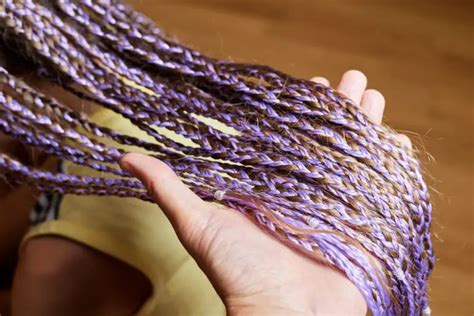Yarn braiding is a versatile and creative craft that can be used to make a wide variety of items, from simple bracelets to intricate home décor. With so many different ways to braid yarn, there’s sure to be a technique that’s perfect for your next project.

In this guide, we’ll explore 500 different ways to braid yarn, including:
- Basic braids
- Complex braids
- Braids with beads
- Braids with ribbons
- Braids with other materials
We’ll also provide step-by-step instructions on how to braid yarn, as well as tips and tricks for getting the perfect braid.
There are many reasons why you might want to braid yarn. Braiding can:
- Add texture and interest to a project
- Create a unique and personal gift
- Be used to make a variety of items, from jewelry to home décor
- Help you to relax and de-stress
The type of yarn you use for braiding will depend on the project you’re making. For example, if you’re making a bracelet, you’ll want to use a thin, strong yarn. If you’re making a home décor item, you can use a thicker, more textured yarn.
Here are a few of the most popular types of yarn for braiding:
- Cotton yarn: Cotton yarn is a good choice for beginners because it’s easy to work with and doesn’t stretch too much.
- Acrylic yarn: Acrylic yarn is a synthetic yarn that’s soft, durable, and inexpensive.
- Wool yarn: Wool yarn is a natural fiber that’s warm, soft, and elastic.
- Silk yarn: Silk yarn is a luxurious fiber that’s strong, shiny, and drapes beautifully.
Braiding yarn is a simple process, but it takes practice to get it right. Here are the basic steps:
- Gather your materials. You will need yarn, a pair of scissors, and a tapestry needle (optional).
- Cut your yarn. The length of your yarn will depend on the project you’re making. For a simple braid, you will need about 3 feet of yarn.
- Tie a knot at the end of your yarn. This will keep the yarn from unraveling.
- Divide your yarn into three equal strands.
- Cross the right strand over the middle strand.
- Cross the left strand over the new middle strand.
- Continue crossing the strands over each other until you reach the end of your yarn.
- Tie a knot at the end of your braid.
- Trim any excess yarn.
Here are a few tips for getting the perfect braid:
- Keep your tension even. If your tension is too tight, your braid will be stiff and difficult to work with. If your tension is too loose, your braid will be floppy and weak.
- Don’t overcross the strands. If you overcross the strands, your braid will be too tight and difficult to work with.
- Be patient. Braiding yarn takes practice. Don’t get discouraged if your first few braids don’t turn out perfect.
Now that you know the basics of braiding yarn, it’s time to explore the many different ways you can braid yarn. Here are 500 different ways to braid yarn:
Basic Braids
- Three-strand braid
- Four-strand braid
- Five-strand braid
- Six-strand braid
- Seven-strand braid
- Eight-strand braid
- Nine-strand braid
- Ten-strand braid
Complex Braids
- Dutch braid
- French braid
- Fishtail braid
- Celtic braid
- Macrame braid
- Kumihimo braid
- Chinese braid
- Japanese braid
Braids with Beads
- Beaded three-strand braid
- Beaded four-strand braid
- Beaded five-strand braid
- Beaded six-strand braid
- Beaded seven-strand braid
- Beaded eight-strand braid
- Beaded nine-strand braid
- Beaded ten-strand braid
Braids with Ribbons
- Ribbon three-strand braid
- Ribbon four-strand braid
- Ribbon five-strand braid
- Ribbon six-strand braid
- Ribbon seven-strand braid
- Ribbon eight-strand braid
- Ribbon nine-strand braid
- Ribbon ten-strand braid
Braids with Other Materials
- Yarn and wire braid
- Yarn and leather braid
- Yarn and fabric braid
- Yarn and beads braid
- Yarn and buttons braid
- Yarn and charms braid
- Yarn and feathers braid
Here are step-by-step instructions for braiding yarn:
Three-strand braid
- Gather your materials. You will need yarn, a pair of scissors, and a tapestry needle (optional).
- Cut your yarn. The length of your yarn will depend on the project you’re making. For a simple braid, you will need about 3 feet of yarn.
- Tie a knot at the end of your yarn. This will keep the yarn from unraveling.
- Divide your yarn into three equal strands.
- Cross the right strand over the middle strand.
- Cross the left strand over the new middle strand.
- Continue crossing the strands over each other until you reach the end of your yarn.
- Tie a knot at the end of your braid.
- Trim any excess yarn.
Four-strand braid
- Gather your materials. You will need yarn, a pair of scissors, and a tapestry needle (optional).
- Cut your yarn. The length of your yarn will depend on the project you’re making. For a simple braid
